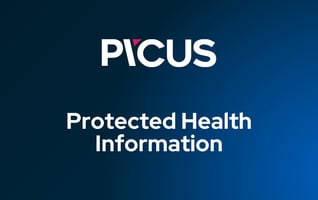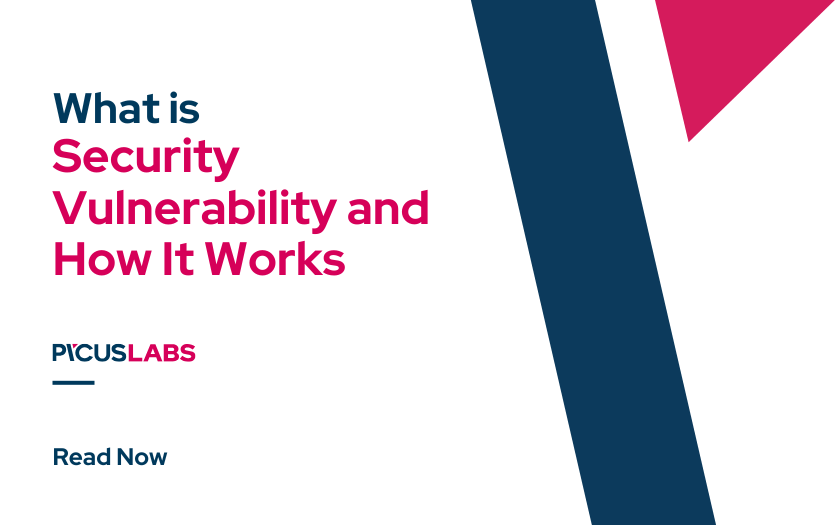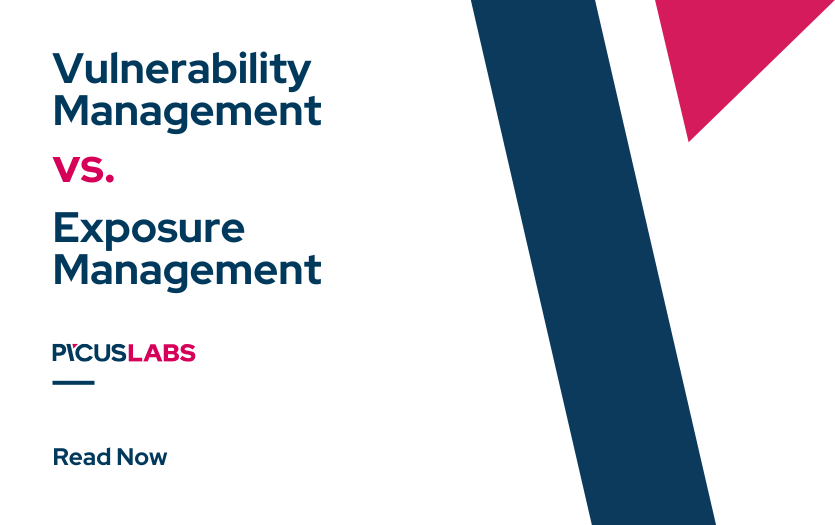What Is Attack Surface Management (ASM)?
Attack Surface Management (ASM) is the continuous process of discovering, inventorying, and mapping all assets that comprise an organization's digital attack surface, whether internal or external, on-prem or in the cloud. ASM identifies all users, devices, policies, software, potential entry points and weak spots that adversaries may use to gain initial access.
Traditionally, ASM tools focused primarily on external surface detection: identifying internet-facing assets, cloud exposures, misconfigurations, and shadow IT. However, to support a modern Continuous Threat Exposure Management (CTEM) approach, ASM must expand to include internal discovery as well. It must feed into validation and prioritization workflows to inform real-world decisions.
That’s why Picus Security integrates both internal and external Attack Surface Validation (ASV) into its platform, to ensure ASM is not just visibility for visibility’s sake, but a foundational layer for continuous exposure validation.
Why Do We Need Attack Surface Management?
Enterprise environments are a patchwork of physical infrastructure, virtual workloads, cloud services, and third-party tools. New assets are introduced constantly, through developer activity, employee devices, system updates, and integrations. The result? An expanding and fragmented attack surface.
It’s not just about the cloud. Local machines, exposed development environments, forgotten internal tools, misconfigured firewalls, overly permissive IAM roles, and outdated security policies all contribute to risk. Attackers only need one entry point. Defenders must know them all.
Importance of Knowing Your Attack Surfaces
ASM helps organizations understand what they’re actually exposing, internally and externally. This includes:
- Physical and virtual systems in datacenters
- Cloud-hosted resources and public-facing services
- User accounts and privileges in Active Directory
- Network policies, firewall rules, and segmentation gaps
- Installed applications and vulnerable packages
Without this visibility, security teams are forced to guess. ASM makes it possible to stop playing defense in the dark and start managing exposures based on real asset intelligence.
Benefits Of Attack Surface Management
Manage risks associated with ever-changing attack surfaces
As organizations evolve, so do their attack surfaces. Mergers, cloud migrations, SaaS adoption, and remote work all introduce new assets that might be overlooked or misconfigured. ASM continuously maps these changes in real time, allowing security teams to address exposures as they emerge, not after they’ve been exploited.
Help mitigate risks associated with cloud assets
Cloud infrastructure is particularly prone to misconfigurations, such as publicly accessible S3 buckets, exposed management consoles, or excessive permissions. ASM provides visibility into these risks by integrating with cloud environments to discover and monitor assets across multiple regions and services.
Proactively identify and eliminate new cyber threats
ASM helps organizations shift from reactive to proactive security. By continuously discovering new assets and identifying previously unknown exposures, ASM empowers security teams to address risks before they’re weaponized. This early warning capability is especially valuable for zero-day vulnerabilities and shadow IT assets.
Improve threat detection and mitigation
With complete visibility into your attack surface, ASM supports more effective detection and faster mitigation. Security teams can correlate asset data with threat intelligence, prioritize critical risks, and verify whether existing controls are capable of detecting or blocking real-world threats.
Traditional Security Assessments vs. Attack Surface Management
Legacy vulnerability assessments are episodic and incomplete. They only capture a moment in time, and often miss assets altogether.
ASM, by contrast, is continuous. It works in real time to keep pace with cloud-native infrastructure, rapid development cycles, and increasingly distributed environments.
But visibility is only the first step. To truly manage exposure, ASM must feed into validation workflows.
Key Challenges Of Attack Surface Management
Ever-changing Attack Surfaces
Cloud services, remote work, and DevOps pipelines introduce constant change. But it’s not just infrastructure, users come and go, devices appear and disappear, and policies drift or weaken over time. ASM must be continuous and automated, capable of tracking these changes across both IT and identity layers to ensure exposures don’t slip through unnoticed.
Discovery of Hidden Assets
Many exposures live in places traditional tools don’t look, untracked user accounts, unmanaged devices, outdated policies, or orphaned assets in Active Directory. ASM helps uncover these blind spots by pulling data from EDR, VM tools, and AD, while mapping assets across OS, policy, and region. This organizational view makes it easier to detect what’s missing, misplaced, or silently exposed.
Rapid Technological Change and New Vulnerabilities
Emerging technologies introduce unknown risks. ASM tools must correlate assets with vulnerability and threat intelligence, and enable prioritization based on more than just CVSS.
Use Cases for Attack Surface Management
Discovery is not just about collecting asset lists, it’s about enabling smarter decisions across the exposure lifecycle. Below are practical use cases for Attack Surface Management that support real operational value.
Identifying Exposed Development or Staging Systems
Attackers don’t care if a system is production or test, if it’s exposed, it’s useful. ASM surfaces these often-overlooked environments before they can be exploited.
Monitoring Public-Facing Assets for Misconfigurations
Public services, exposed ports, and externally reachable workloads are common attacker targets. ASM continuously monitors for misconfigurations, outdated services, and forgotten infrastructure.
Managing Third-Party Risks and Shadow IT
ASM is not only about cloud or infrastructure, it includes what business users bring into the environment too. Unmanaged SaaS, unauthorized integrations, and vendor exposures are surfaced automatically.
Gaining Visibility into Multi-Cloud and Internal Assets
“Discovery without internal context is incomplete.” ASM must include users, devices, policies, and configurations from AD, EDR, and VM tools, not just what’s facing the internet.
Supporting Compliance with Complete Asset Inventories
You can’t defend what you can’t see. ASM enables accurate, audit-ready inventories of systems, policies, user roles, and software, crucial for security standards like NIST, ISO, and PCI DSS.
Reducing Vulnerability Noise with Context
Over-prioritization begins with unvalidated visibility. ASM helps reduce vulnerability noise by organizing exposures with business relevance and operational context, creating the foundation for validation.
|
The point isn't to know what's vulnerable, it's to understand what the attacker will actually try to use. |
Step By Step: Where Attack Surface Management fits into Exposure Management
|
Picus Security aligns its Attack Surface Validation (ASV) capability with the Discover phase of the Continuous Threat Exposure Management (CTEM) lifecycle. |
But rather than treat discovery as a siloed function, Picus connects it directly to validation, prioritization, mobilization, and reporting, creating a seamless exposure management workflow.
Asset discovery
Attack Surface Management starts with visibility, but Picus goes further. Our built-in Attack Surface Validation (ASV) module delivers comprehensive internal and external discovery across your entire environment. While most ASM tools stop at surface-level scans of internet-facing assets, ASV dives deeper, mapping everything attackers could use, from cloud workloads to on-prem devices and internal policies.
We strongly believe that discovery without validation becomes a guessing game. That’s why we designed ASV to unify asset context before simulating any threat.
ASV automatically gathers and organizes assets into five categories:
-
Device – physical, virtual, cloud systems
-
User – identities, including Active Directory (AD) users and group memberships
-
Vulnerability – CVEs from vulnerability management tools
-
Software – packages, binaries, versions
-
Policy – IAM roles, firewall rules, segmentation data
ASV groups assets using organizational logic such as region, business unit, or policy type. This foundation supports an accurate understanding of attack paths and blast radius.
Contextualize and Organize: Classification Before Validation
Once asset data is collected, Picus enriches it with internal metadata and threat modeling tags. This supports the formation of predefined and custom asset groups that mirror attacker logic.
|
We don't just pull in assets. We pre-organize them by attacker-relevant contexts, like privileged machines, policy-violating endpoints, and internet-facing workloads. |
This step bridges ASV to the next stage: validation.
Where ASM Ends, Exposure Validation Begins
Most ASM tools stop at visibility. They can tell you what’s there, but they can’t tell you what matters. That’s why Picus moves beyond traditional asset discovery with a validation-first approach.
|
With Picus, you're not validating the vulnerability. You're validating the attacker's ability to move through your environment despite your controls. |
Once ASV maps your environment, including internal and external assets, users, policies, vulnerabilities, and configurations, the Picus Platform initiates the Validate phase of CTEM.
This is where raw exposure data is tested against real-world adversarial behaviors to determine if they’re exploitable in your environment.
The Picus Platform simulates real-world threats using:
-
Security Control Validation (SCV) validates whether security controls such as firewalls, IPSs, and WAFs block, or at least log, detect, and alert on threat behaviors through Breach and Attack Simulation (BAS) technology.
-
Attack Path Validation (APV) uses automated penetration testing to simulate lateral movement, privilege escalation, and chained attack scenarios inside your environment.
|
In this step, you're not validating the vulnerability. You're validating the attacker's ability to move through your environment despite your controls. |
Other exposure validation modules are as follows.
-
Cloud Security Validation (CSV) assesses misconfigurations, privilege misuse, and access risk across multi-cloud environments using real threat logic.
-
Detection Rule Validation (DRV) challenges detection rules across SIEM, EDR, and XDR to determine whether malicious activity triggers alerts.
These validation outcomes are traceable back to the discovery output, forming an end-to-end threat modeling loop.
Prioritize: Evidence-Based Scoring with PXS
Once exposures are validated, they’re no longer hypothetical, they’re actionable. This is where the Picus Exposure Score (PXS) comes in.
Introduced during the Exposure Validation Summit, PXS is a composite score built from actual simulation results, not assumptions or default metrics:
|
CVSS is a guess. PXS is proof. It's what happens when validation drives prioritization. |
Unlike legacy scoring models that rely on generalized risk (e.g., CVSS or EPSS), PXS reflects:
- Whether a threat was blocked or detected by your actual controls
- How easily it could be exploited in your specific environment
- The criticality of the asset involved
- The role of misconfigurations, policy violations, and real attacker behavior
So, with PXS, we’re not just saying something is risky. We’re showing you how and why it’s risky, based on evidence that’s already been collected by the platform.
This evidence is visualized through:
-
Exposure Lists: Prioritized findings that passed validation, complete with proof of exploitability
-
Exposure Paths: Visual chains of validated attacker movement across assets, helping teams anticipate impact
The result? A clear, contextual signal of what to fix first, without drowning in unvalidated noise.
Mobilizing Remediation Efforts
Once exposures are validated and prioritized, remediation needs to happen, fast, structured, and traceable. That’s what the Mobilize phase of the Picus Platform is built for.
Picus translates validated risk into action through its Remediation Operations (RemOps) engine:
- Open remediation tasks directly from validated exposures
- Integrate with ticketing systems to auto-assign actions
- Track progress by exposure source (SCV, APV, CSV, DRV)
Each exposure type has its own recommended mitigation path:
- For SCV: harden or reconfigure blocking controls
- For APV: close lateral movement routes
- For CSV: remediate cloud misconfigurations
- For DRV: tune detection rules and alerting thresholds
Remediation only works when you can prove the problem and suggest the fix. That’s where Picus outperforms ASM-only platforms.
This phase isn’t an afterthought, it’s operational. Picus helps teams move from validation to measurable security improvement.
|
Even if no patch is available, Picus provides compensating control suggestions and threat-informed mitigations that are trackable within the platform. |
Every action is mapped to a specific exposure and tied to evidence, so that teams never lose the connection between threat, response, and outcome.
Why Attack Surface Management Alone Isn't Enough
Discovery is essential. But stopping at visibility introduces a new problem: over-prioritization without validation.
|
Discovery without validation becomes a guessing game. |
Static scoring models like CVSS and EPSS lack environmental awareness. They don’t account for how well your controls actually perform or how attackers behave in your environment. Without validation, everything appears critical, even when most of it isn't exploitable.
The result?
- Unvalidated exposures flood remediation backlogs
- Teams waste cycles chasing issues that controls already block
- High-risk exposures stay hidden behind volumes of noise
With Picus, every discovery is followed by adversarial simulation. Every validation result drives scoring. And every prioritized exposure is backed by evidence, so security teams act on what matters, not what looks risky on paper.
Validation is the only way to stop over-prioritization. Without proof, you’re still just guessing.
Evidence-Based Exposure Validation
|
The point isn't to know what's vulnerable. It's to understand what the attacker will actually try to use. |
Picus Exposure Validation identifies real attack paths through your environment by factoring in both exposure and control performance. This goes beyond theoretical risk and reveals where defenses truly break down.
To support this approach, the next section presents real-world statistics from production environments, demonstrating how integrating Attack Surface Management with validation leads to measurable reductions in noise, workload, and remediation time.
Real World Statistics About Attack Surface Management Integrated into Exposure Management
Exposure Management with validation is no longer a theory, it’s producing real operational results across sectors. Here’s what’s happening when organizations combine discovery (via ASM) with evidence-based validation:
-
Just 2% of exposures account for 98% of real-world risk: This outcome emerged from validation exercises where theoretical vulnerability lists of 15,000+ entries were narrowed to ~300 critical, truly exploitable issues.
-
Organizations reported an 80–86% reduction in patch workload: Exposure validation helped teams deprioritize thousands of findings that were previously flagged as critical, but proved to be blocked or unexploitable in the real environment.
-
Mean Time to Remediate (MTTR) dropped from 45 days to 13 days: By focusing on validated exposures, remediation became faster, more targeted, and more efficient, eliminating guesswork and firefighting.
-
Validated remediations resulted in $500,000+ saved annually in analyst time alone: Teams reclaimed cycles otherwise wasted on triaging noise or chasing unexploitable vulnerabilities.
-
“False highs” were safely deprioritized, while 2% of medium risks were escalated to critical based on validation evidence: Exposure validation didn't just remove noise, it also elevated silent risks that were missed by CVSS or EPSS models alone.
-
Security teams cut critical backlog from 9,400 findings to under 300 within weeks: This 97% reduction was achieved through continuous simulation, control hardening, and smart prioritization, empowered by ASM and validation in tandem.
See It In Action: Exposure Validation, Informed by Attack Surface Management
Picus ASV is included into Picus Platform at no additional cost because we believe better discovery results in better validation.
ASV is purpose-built to serve the Discovery phase of the CTEM cycle. It maps internal and external assets, users, policies, vulnerabilities, and more, creating the foundation needed for meaningful validation.
Once discovery is complete, the Picus Exposure Validation Platform moves into action:
- Simulation-based validation tests how well your controls perform
- Exposure scoring prioritizes what matters most
- Remediation and reporting close the loop with evidence
|
ASM shows where attackers could go. Exposure Validation proves where they can. |
Start with visibility. Advance with validation. Prioritize with evidence.
Ready to move from surface discovery to operational certainty? Book a Picus demo.

-3.png?width=353&height=200&name=image%20(79)-3.png)






